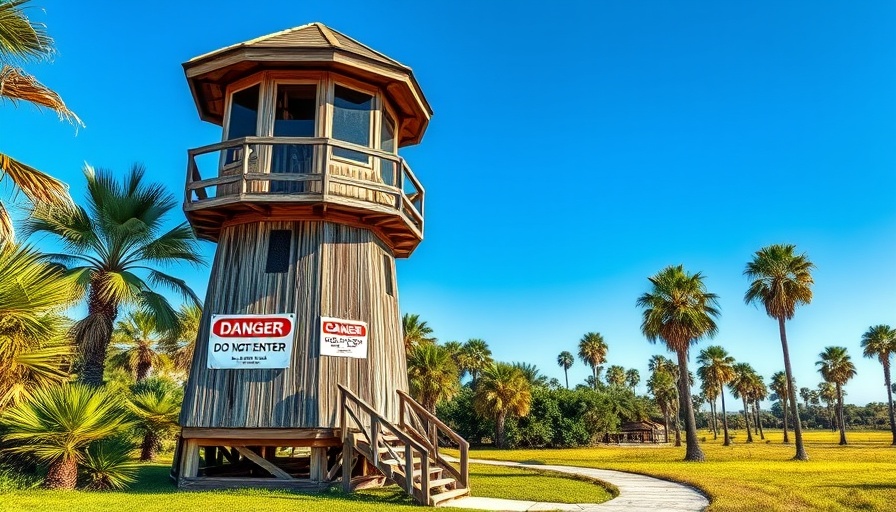
Serious Safety Concerns Lead to Closure of Florida Observation Tower
In a notable turn of events for outdoor enthusiasts, the Linda Pedersen Park Observation Tower, located in Hernando County, Florida, has been shut down due to alarming safety concerns. Spanning 40 feet, this popular vantage point overlooking the stunning Gulf of Mexico underwent recent inspections that revealed significant issues including deteriorating materials, outdated construction methods, and numerous structural deficiencies.
The Roots of Deterioration
Officials from the Hernando County Parks & Recreation Department reported that the tower has suffered from “significant deterioration” attributed to prolonged exposure to the elements. Critical observations noted missing deck planks, unstable staircases, loose railings, and detached joists, all of which contribute to its precarious condition. As safety remains paramount, officials have imposed a closure until the situation is adequately addressed, reflecting a broader trend of revisiting the safety and structural integrity of recreational facilities nationwide.
The Impact on Community Engagement
This closure does not merely affect visitors looking for a panoramic view; it ripples through the community, often serving as a gathering point for families and friends. The tower was not just a structure but a piece of history and a source of local pride. The sudden closure prompts a community reflection on recreational safety and public space preservation.
Reinforcing Safety: A Key Concern
The decision to close the observation tower comes amid growing awareness about the importance of maintaining outdoor structures. Similar incidents across the nation, from rotting wooden bridges to crumbling playgrounds, have highlighted the need for regular maintenance and timely inspections. Residents are urged to advocate for the investment of resources into park infrastructure to prevent such closures from becoming a recurring theme. Without proper attention, these cherished community landmarks risk diminishing in value both physically and emotionally.
Funding and Future Improvements
In light of the current situation, the Parks & Recreation Department may seek funding for renovations. Some have suggested exploring partnership opportunities with private entities or social organizations, which can help share the financial burden of restoring the tower. While safety precautions must be the priority, enhancements to the structure could not only revive the tower but also potentially enhance visitor experiences in the future.
Looking Ahead
The closure of the Linda Pedersen Park Observation Tower is a reminder of our collective responsibility. It resonates with larger conversations about infrastructure safety, community engagement, and the preservation of public spaces. As the repairs get underway, discussions about long-term safety and maintenance protocols for parks and recreational sites will be invaluable in ensuring such closures are rare and effectively managed.
Community members and visitors alike are encouraged to stay informed and participate in local discussions regarding park safety and upcoming improvements. These spaces serve as vital parts of our community's landscape; keeping them safe and welcoming is everyone's responsibility.
 Add Row
Add Row  Add
Add 




Write A Comment